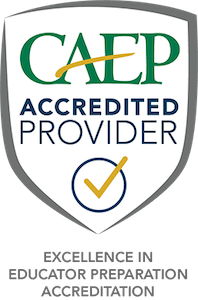Description of Residency II
West Virginia Department of Education (WVDOE) Series 5100, section 5.30., describes the state’s 500-hour long Residency II Model as “Component of an EPP that provides teacher candidates with both the underlying theory of effective teaching and a year-long, in-school residency in which they practice and hone their skills and knowledge alongside an effective cooperating teacher. Unlike other teaching certification models, residents do not serve as the teacher of record in the classroom” (pg. 6). Section 5.30b. defines Residency II as “The second semester of the yearlong clinical experience contingent on successful completion of Residency 1” (pg. 6). According to WVDOE Series 5100, Section 6.8a, “all EPPs with WVBE-approved programs of study leading to West Virginia educator licensure must begin the transition to a full residency model by including a minimum of one program with a yearlong residency pathway as the final clinical experience as defined in section 5 for candidates completing their program. All educator preparation content areas will transition to The West Virginia Residency Model no later than the Fall of 2024 with incoming freshman cohorts” (pg. 15).
WVDOE Series 5100, section 6.8.c.3 states that “The yearlong residency clinical experience must be completed under the direction of a teacher licensed to teach in the state of the placement and in the content area in which the candidate is seeking an endorsement, issued by the state’s authorizing agency. Candidates who are completing their clinical experience as the teacher of record (e.g., CTR, candidates seeking alternative certification or on a first-class permit) will have professional support team in lieu of a cooperating teacher as described in W. Va. Code §18A-3C-1. The candidate must be assessed during the clinical experience in all specializations for which the candidate is requesting licensure during field-based and/or clinical experiences. Candidates must successfully complete all Praxis II exams prior to entering Residency 2 or meet approved criteria stated in the West Virginia Licensure and Testing Directory. The IHE is also required to document the candidates’ field-based and/or clinical experiences with diverse multicultural, at-risk, and special needs learners at each programmatic level for which they anticipate licensure. Yearlong clinical experiences completed in a virtual/online environment shall not constitute more than 50 percent of the minimum required experience. Five requirements for the programmatic level coverage for required field-based experiences exist in the current system” (pg. 15).
COEPD Transition to Residency II
The Marshall University College of Education and Professional Development (COEPD) began to pilot the WV Residency Model beginning in Fall 2022, beginning with Elementary Education candidates because the COEPD housed the courses required for completion. With Secondary Education, required content courses are housed and controlled by other colleges within the University, making it more complicated to consistently schedule these students. Secondary candidates were provided the option to participate in Residency II; however, most did not participate due to limited time with the 500-hour requirement; therefore, most Secondary candidates participate in the Level II and Level III clinical experience, although there is data for minimal Secondary candidates and concentration areas. The Residency I evaluation is completed by the candidate’s cooperating teacher using the Danielson Framework for Teaching (DFFT) Rubric twice per semester, once at mid-term and again at the end-of-term.

